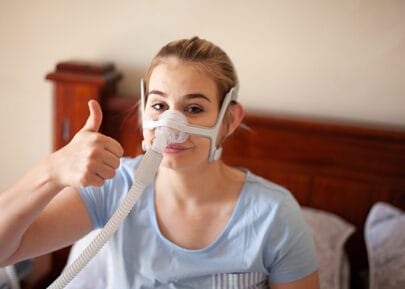
Sleep Apnea CPAP Settings: Common Mistakes and How to Fix Them
Using a CPAP device for obstructive sleep apnea can dramatically improve your quality of life. However, incorrect CPAP settings can reduce the device’s effectiveness and leave you feeling frustrated. Knowing how to identify and resolve common mistakes in your sleep apnea CPAP settings can make a significant difference in the success of your therapy.
The Basics of CPAP Settings
CPAP devices are designed to deliver continuous air pressure, keeping your airway open during sleep. They often come with adjustable settings, including:
- Pressure Levels: Measured in centimetres of water pressure (cmH₂O), this determines the force of the airflow.
- Ramp Time: Gradually increases pressure as you fall asleep.
- Humidity Levels: Adds moisture to prevent dryness or irritation.
- Automatic Adjustments: Some devices use APAP (automatic positive airway pressure) to adapt pressure levels throughout the night. Many doctors now set the pressure range wide to ensure that the device automatically adjusts to the correct pressure. With the advent of home sleep testing, many insurers and doctors forgo the formal titration in the sleep laboratory and instead allow the APAP device to perform the titration by picking the correct settings based on the elimination of snoring and apneic/hypopneic events.
Even minor inaccuracies in these settings can impact your sleep therapy.
Common CPAP Setting Mistakes
Incorrect Pressure Settings
- Problem: Using pressure that’s too high or too low can cause discomfort or make the CPAP ineffective. Low pressure may fail to keep your airway open, while high pressure can lead to air swallowing or nasal congestion.
- Fix: Your doctor determines your pressure settings during a titration study. Always follow their recommendation, and schedule follow-ups if adjustments are needed.
Not Using the Ramp Feature
- Problem: Many people find it difficult to fall asleep with full pressure immediately applied.
- Fix: Activate the ramp feature, which starts at a lower pressure and gradually increases to the prescribed level, making the experience more comfortable.
Ignoring Humidity Settings
- Problem: Skipping the humidifier option can lead to dry throat, nasal congestion, or irritation.
- Fix: Adjust humidity levels based on your comfort. Use distilled water in the humidifier and clean it regularly to prevent bacteria buildup.
Mask Leaks
- Problem: Improper mask fit can cause air to escape, reducing pressure effectiveness and causing noise or skin irritation.
- Fix: Ensure your mask fits snugly but isn’t overly tight. Experiment with different mask types if leaks persist.
Relying on Default Settings
- Problem: Default CPAP settings may not be tailored to your specific needs.
- Fix: Work with your sleep specialist to customize the device’s settings. Don’t hesitate to request changes if the current settings aren’t comfortable or effective.
Signs That Your CPAP Settings Need Adjustment
If you experience any of the following, your CPAP settings may require fine-tuning:
- Persistent Fatigue: If you’re still feeling tired, your pressure may be too low to treat your apnea effectively.
- Excessive Air Swallowing (Aerophagia): This indicates the pressure might be too high.
- Congestion or Dryness: Incorrect humidity levels or airflow can irritate your nose and throat.
- Difficulty Falling Asleep: You might need to activate the ramp feature or adjust the pressure.
How to Fix CPAP Setting Issues
Consult a Sleep Specialist
Your healthcare provider can make evidence-based adjustments to your CPAP settings. They might recommend an overnight sleep study or at-home monitoring to ensure accuracy.
Monitor Data from Your CPAP Device
Most modern CPAP devices track usage data and provide feedback on pressure effectiveness, leaks, and apnea events. Share this data with your doctor to refine your settings.
Experiment with Features
- Try different humidity levels if you experience dryness or congestion.
- Adjust ramp settings for a gentler start to your therapy.
- Use the exhalation relief feature (if available) to make breathing out against the pressure easier.
Use the Right Mask
Masks come in various styles: full-face, nasal, and nasal pillows. If your current mask is uncomfortable or leaks, explore alternatives that better suit your face shape and sleep position.
Check Equipment Regularly
Faulty equipment can interfere with CPAP performance. Replace filters, tubing, and masks as recommended by the manufacturer. Clean the components frequently to maintain hygiene and airflow efficiency.
Preventing Future Issues
- Start with a Comprehensive Titration Study: During this process, your sleep specialist determines the ideal CPAP pressure settings for you. Follow up regularly to ensure these settings remain appropriate as your needs evolve.
- Educate Yourself: Understanding your CPAP device’s features and how they impact your therapy helps you recognise when adjustments are necessary.
- Use Feedback Tools: Many CPAP devices are compatible with apps or software that let you monitor your sleep data in real time. These insights can guide your discussions with your doctor.
- Stay in Contact with Your Provider: Regular communication with your sleep specialist ensures that any new issues are addressed promptly.
Your CPAP device is a powerful tool for managing sleep apnea, but only if it’s properly configured. Mistakes in sleep apnea CPAP settings, such as incorrect pressure levels or ignoring ramp and humidity options, can reduce your therapy’s effectiveness. By understanding your device, monitoring its performance, and working closely with your doctor, you can optimize your settings for better sleep and improved overall health.



